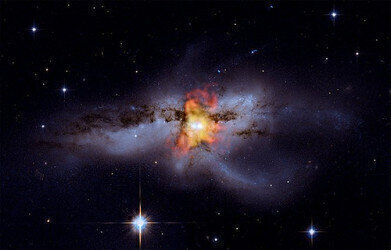News & Views
How Small Can a Black Hole Go?
Jan 02 2016
The mysteries of the solar system have infatuated space scientists for decades. Black holes are one of the most enigmatic phenomena, with a reputation as enormous, intense gravitational fields that seem to vanish away radiation and matter.
While scientists have generally assumed that black holes are categorically large, the latest reports from the American Astronomical Society's conference in Los Angeles revealed that black holes can be small. Space scientists took to the stage and shed light on the smallest black hole ever observed. It measured in at just 3.8 times the Sun’s mass, and just 24km in diameter.
Do ‘micro’ black holes count?
It sparked conversation about the existence of microscopic black holes. The gravitational masses we’re used to hearing about are known as ‘stellar black holes.’ These are created from collapsing stars, with the void forming nearby surrounding matter and gaining mass over time. In comparison, ‘micro black holes’ evaporate in a fraction of a second, and are unable to draw in any matter. Some scientists are adamant that these count as black holes, while others maintain that the lack of sucking power puts them in an entirely different category.
Unravelling the mysteries of ‘micro’ black holes
Either way, space scientists have been conducting incredible research into the formation of micro black holes. Some maintain that the ultra-low TeV energy range is enough to form micro black holes, which means they could be created in particle accelerators such as the Large Hadron Collider. Built by the European Organization for Nuclear Research, it’s the world's largest and most powerful particle collider. There’s been a huge amount of controversy over the artificial creation of LHC micro black holes. Some eccentric critics are gravely concerned that the monster machine could produce a mini black hole that could quite literally swallow the Earth whole.
Want to know more about cutting edge research focussing on particles? ‘Particle Characterisation with Dynamic Image Analysis Determination of particle size and particle shape with a new measuring technique’ looks at particle research here on planet Earth, and the new technologies that are replacing the long established methods of sieve analysis and laser diffraction. Today, advanced particle analysing equipment from Retsch Technology use DIA technology to meticulously evaluate images of the particles. Known as CAMSIZER and CAMSIZER XT, the machines are able to determine parameters such as length, width and sphericity of particles.
Image via Flickr Creative Commons. Photo credits: NASA's Marshall Space Flight Centre
Digital Edition
LMUK 49.7 Nov 2024
November 2024
News - Research & Events News - News & Views Articles - They’re burning the labs... Spotlight Features - Incubators, Freezers & Cooling Equipment - Pumps, Valves & Liquid Hand...
View all digital editions
Events
Nov 18 2024 Shanghai, China
Nov 20 2024 Karachi, Pakistan
Nov 27 2024 Istanbul, Turkey
Jan 22 2025 Tokyo, Japan
Jan 22 2025 Birmingham, UK




.jpg)














